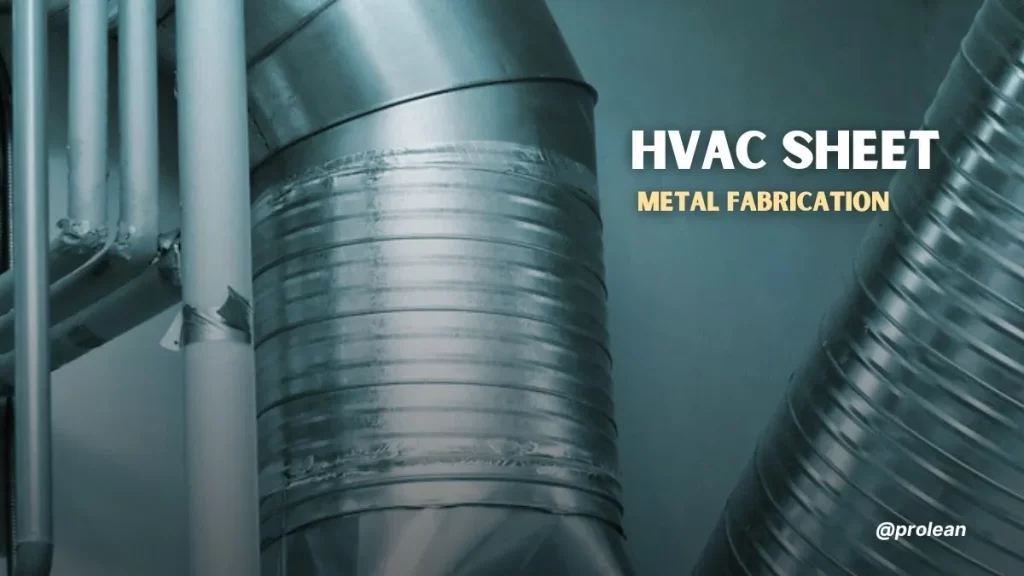
HVAC Sheet Metal Fabrication
When your home feels just right, thank efficient HVAC systems. However, behind that comfort lies smart metalwork and meticulous planning.
HVAC fabricators are those who shape that comfort. They cut and form sheet metal to build ducts and vents of different sizes and shapes. These components guide warm and cool air through your space. Without them, airflow would be weak, noisy, or uneven.
Every cut, bend, and joint must be precise and accurate, as a minor error can have a significant impact on the entire HVAC system’s operation. Fabricators work with tools that press, fold, and weld metal for Duct Fabrication. They shape each piece to match your building’s layout. Their work must comply with safety, airflow, and energy regulations. That’s why experience and skill matter in this job. Prolean Tech is a professional sheet metal fabrication company in China. We utilize a range of operations, including sheet metal cutting, welding, and bending, at our in-house facility.
In this guide, you’ll learn what custom sheet metal fabrication HVAC involves. We’ll show how hvac duct sheet metal shapes the comfort you rely on.
What Is Sheet Metal Fabrication?
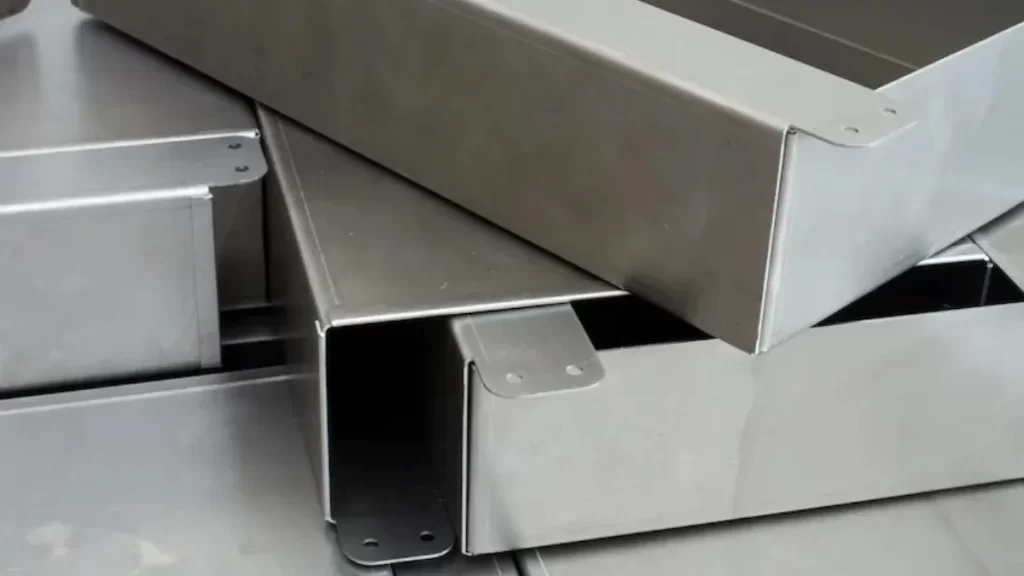
Sheet Metal Fabrication
Sheet metal fabrication is the process of turning metal sheets into meaningful products and structures. It usually ranges from small items, such as trays, to large systems, like ductwork.
The process can be simple. It involves cutting and bending, or, more complex, using CAD drawings and CNC machines. Typically, it encompasses three primary sheet metal cutting methods: forming, cutting, and joining. The method used depends on the actual product needed.
- Forming: In this process, metal sheets are shaped through methods like stamping, bending, or stretching.
- Cutting: Here, metal is cut into shapes using tools like lasers and plasma cutters.
- Joining: In the last stage, the parts are united together. It is often created through welding, adhesives, and riveting to create the final product.
HVAC Sheet Metal Fabrication Explained
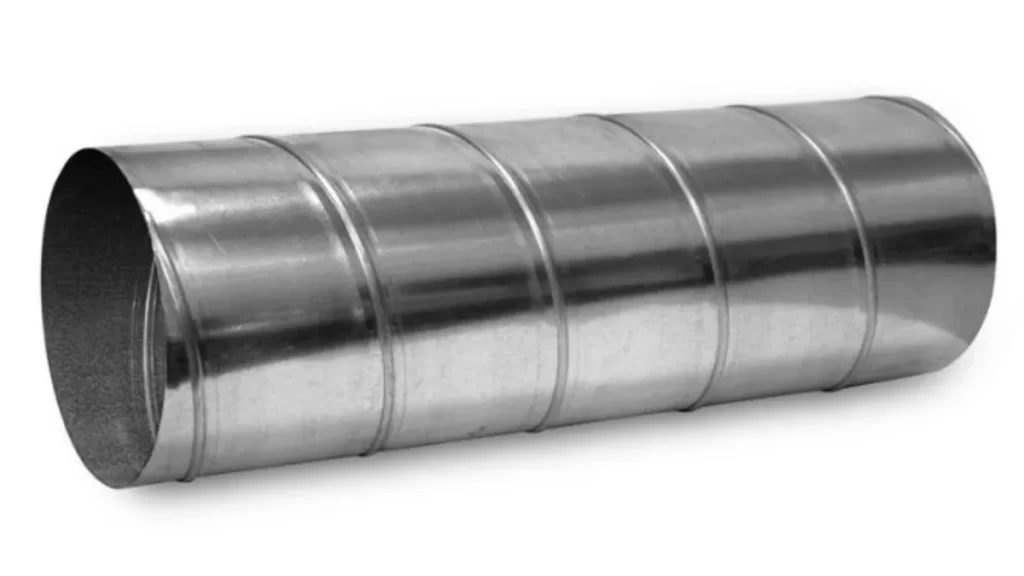
Sheet Metal HVAC Duct
HVAC metalwork creates parts for heating and cooling systems. The common parts include ducts, vents, pipes, and covers. The job begins with careful design and planning. Each part must fit perfectly into the system’s layout.
Fabricators cut, bend, and shape metal sheets manually. They often work with steel, aluminum, and stainless steel sheets. Precision remains a crucial aspect at every step of the process. A slight mistake can lead to ineffective system performance.
Moreover, strong joints and smooth airflow are also key objectives. That’s why every piece must be clean and exact. This entire system enables your HVAC system to run safely and smoothly. Without it, air can leak or flow unevenly.
Try Prolean Now!
The Role of Heavy Metal in HVAC Sheet Metal Fabrication
Thicker metals are ideal for constructing HVAC components. These materials can withstand high pressure, temperature fluctuations, and heavy use without breaking down.
For example, galvanized steel and stainless steel exhibit high corrosion resistance and structural integrity under stress. Sheet Metal Fabricators specifically choose these materials based on their strength as a key consideration.
Ductwork
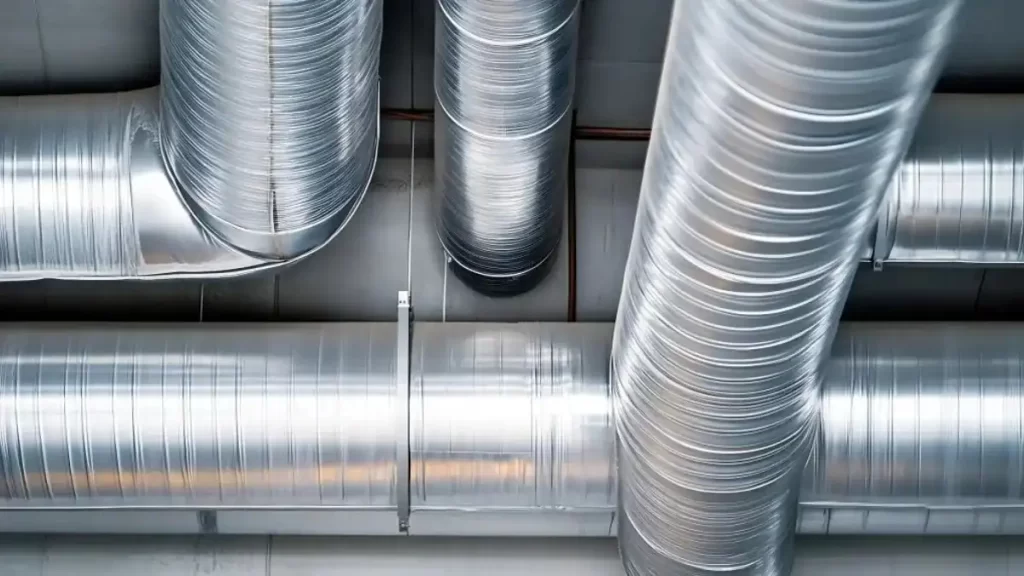
Stainless Steel HVAC Duct
HVAC ducts work as air transportation systems inside structures, spaces, and corridors. Heavy-gauge galvanized steel stands as the primary choice among all construction materials. Steel has extended durability because it resists the formation of rust. Moreover, it maintains its stable form even when subjected to continuous airflow pressure.
Custom Enclosures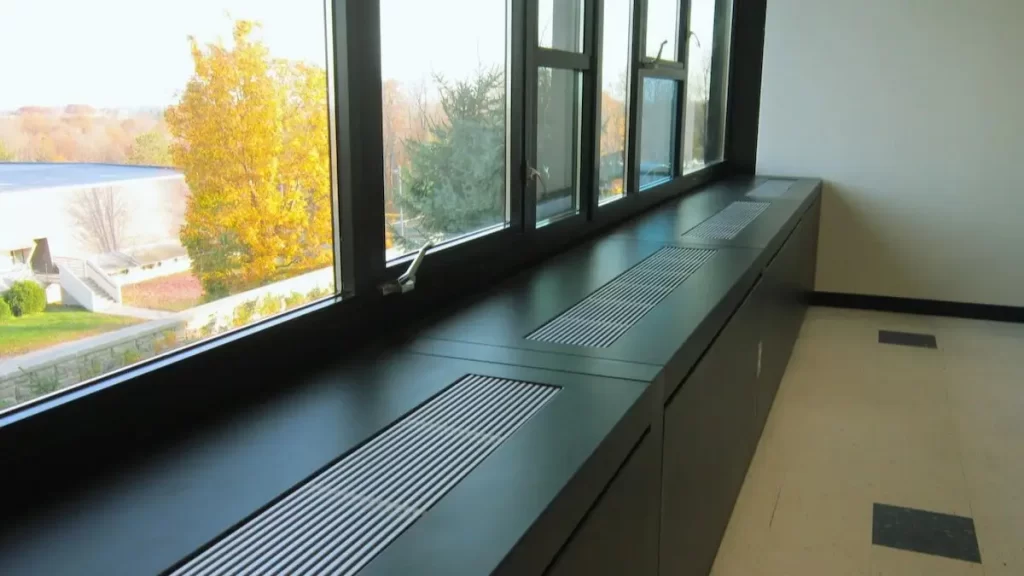
Induction Unit Custom Enclosure
Protective metal covers or enclosures are often installed on outdoor HVAC components such as condensers, which house compressors. They act as a barrier to protect components against environmental elements and physical impacts.
Fabrication workers shape stainless steel into strong containers. The result leads to improved safety and extended operational duration of HVAC systems.
Exhaust Systems
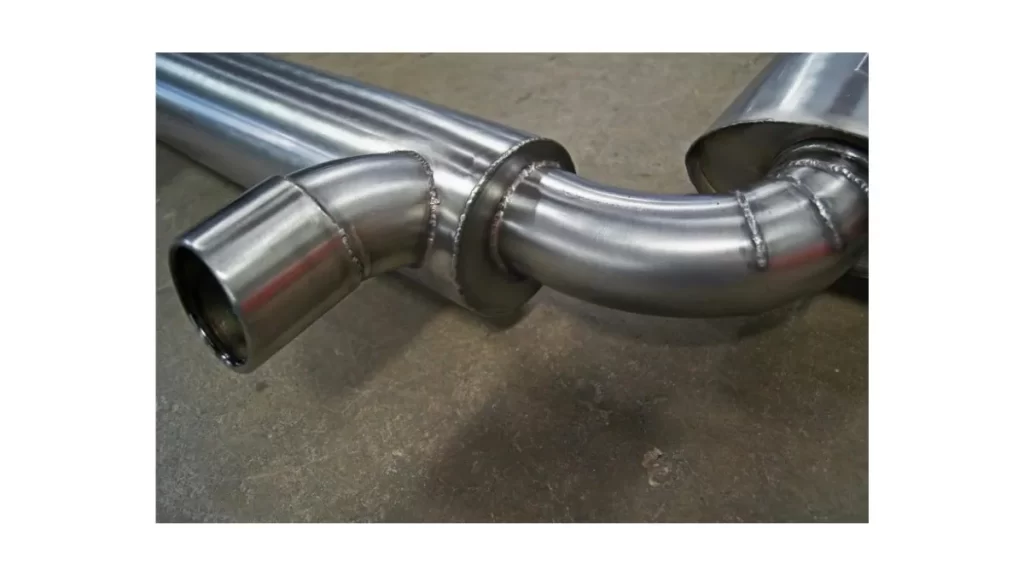
Custom Exhaust System
HVAC exhaust parts function to remove airborne fumes, gases, and smoke. Such systems operate at elevated temperatures. Therefore, they require complete air insulation at all times.
Thicker stainless steel serves as an effective barrier to leaks while withstanding elevated temperatures. The structures prevent unsafe air from re-entering the buildings after it is exhausted from the HVAC system.
Structural Supports
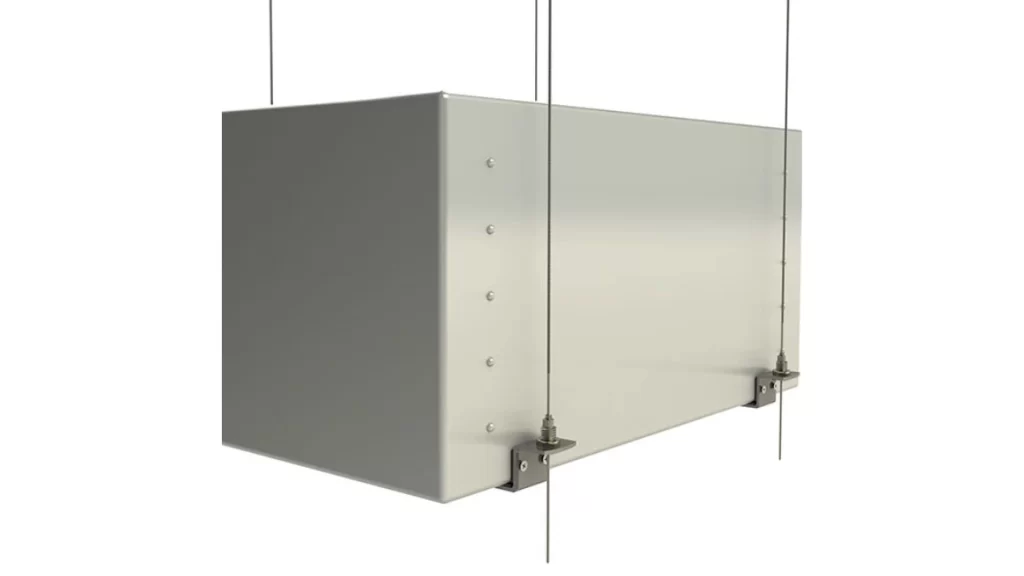
HVAC Duct Hanger
The frames of HVAC systems require structural solidity to function correctly. Brackets and rails are created from heavy metal. These needed to function properly to meet their intended purpose.
Weight and vibration do not affect the stability of these HVAC components. The implementation of such components requires either welding by fabricators or their bolting to system structures.
The HVAC Fabricator’s Craftsmanship
The primary responsibility of HVAC fabricators involves converting basic metal materials into ducts, pipes, and supports that allow effortless airflow through buildings. The job tasks of fabricators include the following sequence:
Design
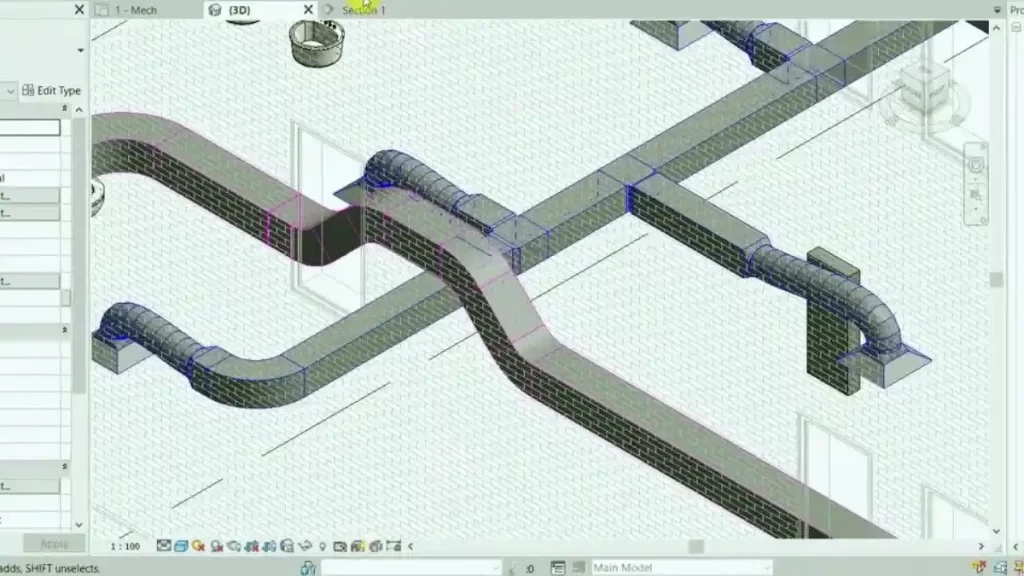
HVAC 3D Duct Design
Design remains the first step. Fabrication plans received by fabricators present complete specifications about component dimensions and operational requirements. The fabricator checks that each system component aligns precisely with its intended location in an HVAC installation, regardless of whether it involves ducts or mounting brackets.
Material Selection
The success of any project depends on selecting the right metal for the right job. The selection of materials depends on specific requirements, as fabricators choose between common types of sheet metal, like galvanized steel, aluminum, and stainless steel, for manufacturing projects.
The chosen metals must have sufficient strength to withstand challenging environmental conditions and resist rust formation, particularly when operating in humid and extreme temperature zones.
Cutting and Shaping
The selection of materials leads fabricators to convert them into all necessary system components through their cutting and shaping operations. Special tools, such as lasers and plasma cutters, help fabricators achieve precise measurements. Regardless of the component, whether it is ducts, panels, or frames, the fabricator must achieve exact dimensions.
Welding and Assembly
Then comes the joining process. It involves welding work. At this stage, the assembly workers establish safe connections between all components. The welding process creates essential parts because it allows devices to resist pressure and maintain their integrity. The fabricators test for complete air tightness to guarantee system performance.
Finishing and Coating
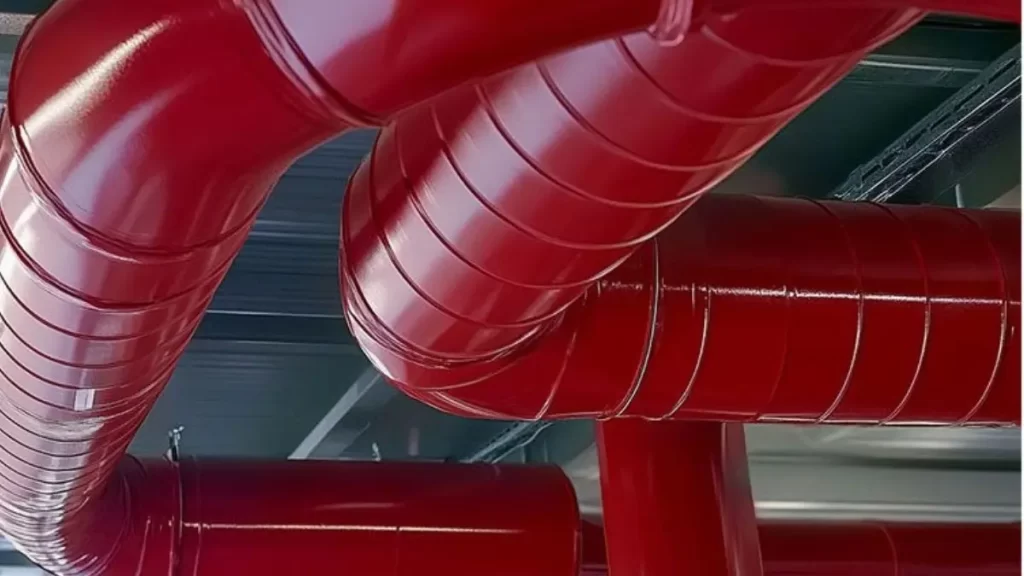
Powder Coated Ventilation Duct
The parts undergo finishing actions after the welding process is complete. Protection against rust develops through cleaning processes, which in turn lead to the application of protective coatings. It involves the use of powder coatings and alternative protective techniques, which extend product lifespan and achieve aesthetically pleasing visual results.
Quality Control
Finally, everything is double-checked at the last stage. Factory personnel conduct thorough inspections of every component to verify that it meets precise requirements. The inspection process identifies quality defects by measuring every component and verifying its operational capability.
Try Prolean Now!
The Impact of Heavy Metal Fabrication on HVAC Efficiency
The quality standards of HVAC sheet metal production directly affect system performance standards. Heating, ventilation, and air conditioning systems perform better with precise fabrication. The following chain of effects occurs in HVAC systems because of heavy metal fabrication:
Preventing Duct Leakage
Airtight duct fabrication process avoids the amount of energy lost through duct seams. System efficiency and comfort improve because proper sealing maintains conditioned air within the system.
High Durability
Stainless steel and galvanized steel resist mechanical wear due to their heavy metallic composition. The longevity of HVAC systems is extended because these materials produce systems that need less maintenance and replacement work.
Improved Energy Efficiency
Components that receive precise fabrication enable perfect collaborative performance between all system elements. The reduction in inefficient operations and friction results in energy savings, which in turn lead to lower utility costs.
Better Air Quality
A high standard of manufacturing allows HVAC systems to operate with efficient airflow. The system operates at peak performance. It filters and distributes air efficiently due to its precise components, resulting in improved indoor air quality.
Noise Reduction
Heavy metal fabrication enables engineers to design noise-reduction enclosures. These enclosures create a more favourable indoor environment.
Picking the Right Company For Sheet Metal Fabrication for HVAC Ductwork
Traditional HVAC ductwork can be complicated and inefficient. Installing pipes and fittings involves a detailed process. It often results in rising energy costs. Therefore, it’s essential to collaborate with a professional custom sheet metal fabrication company to meet the standards for efficiency.
Fabricating ducts with sheet metal is a more straightforward solution. A skilled fabrication company enables you to cut and shape metal to exact specifications, and to achieve effective system operation that lasts longer and uses less energy.
When you’re ready to install an HVAC system in your building, be sure to work with experienced professionals like Prolean Tech to achieve the best results.
FAQ’s
What Is HVAC Sheet Metal Fabrication?
HVAC sheet metal fabrication involves the metal parts for heating, cooling, and ventilation systems. These include ducts, vents, and housings. The process involves cutting, bending, and assembling sheet metal.
What Sheet Metal Is Used for HVAC?
Most HVAC systems utilize galvanized steel because it’s strong, resistant to rust, and suitable for long-term use. Aluminum is lighter and easier to work with, making it great for custom jobs. Stainless steel is also used when strength and cleanliness are crucial. These ducts are often used in hospitals and other medical facilities.
What Is the Thickness of Sheet Metal for HVAC?
HVAC metal comes in different thicknesses, measured in Sheet Metal Gauge. Generally, thinner sheet metal, such as 28-gauge, is used for small ducts. Thicker metal, such as 16 or 18 gauge, is stronger and used in larger systems.

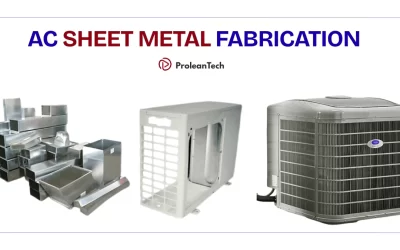
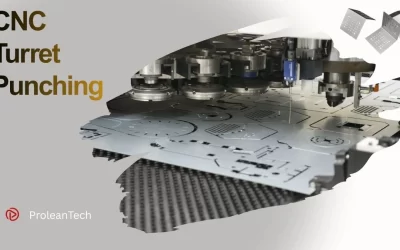
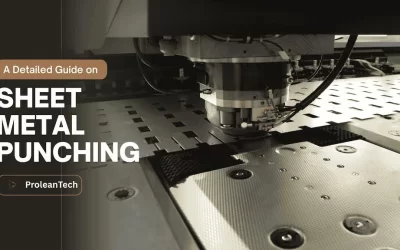
0 Comments